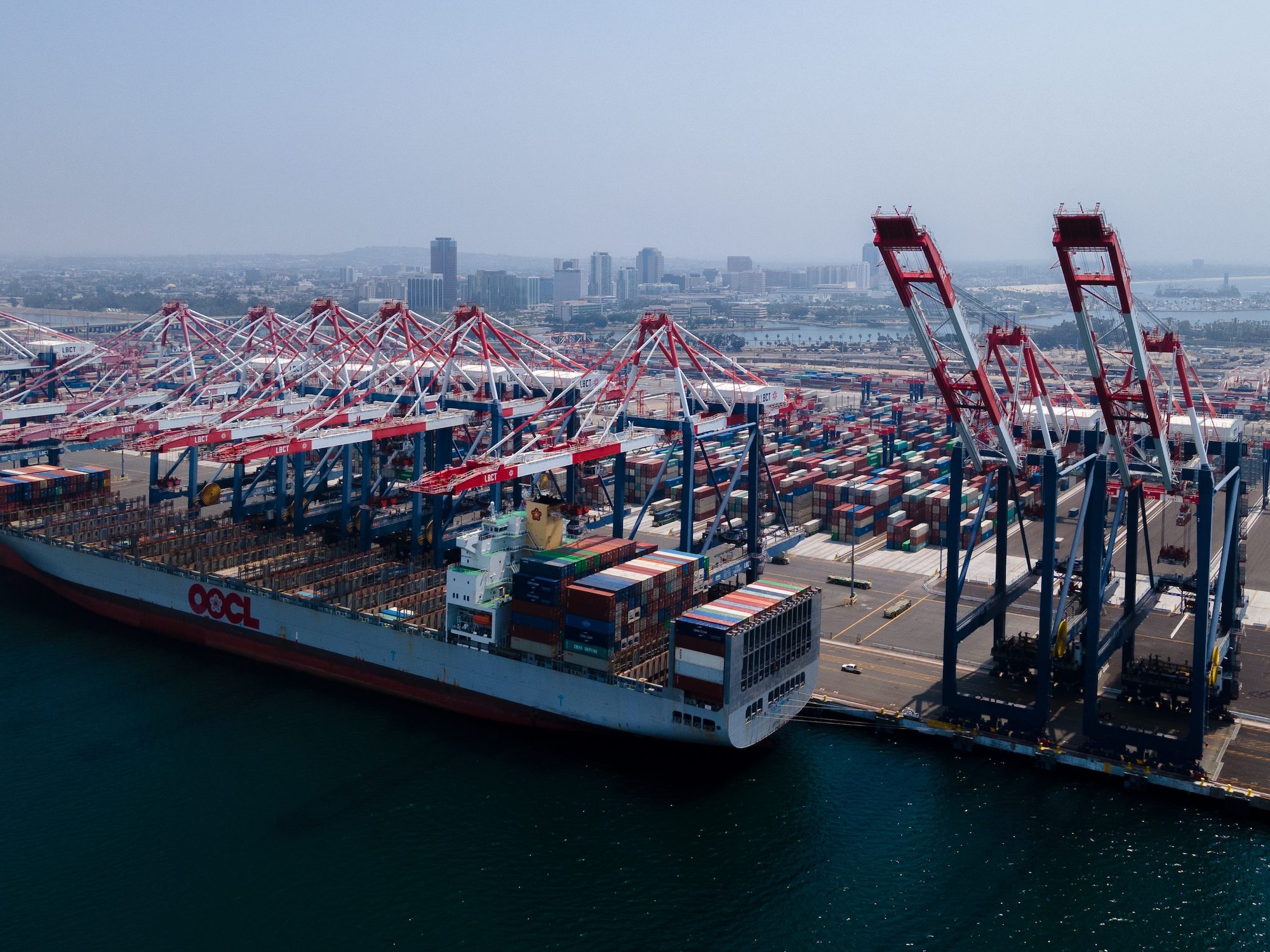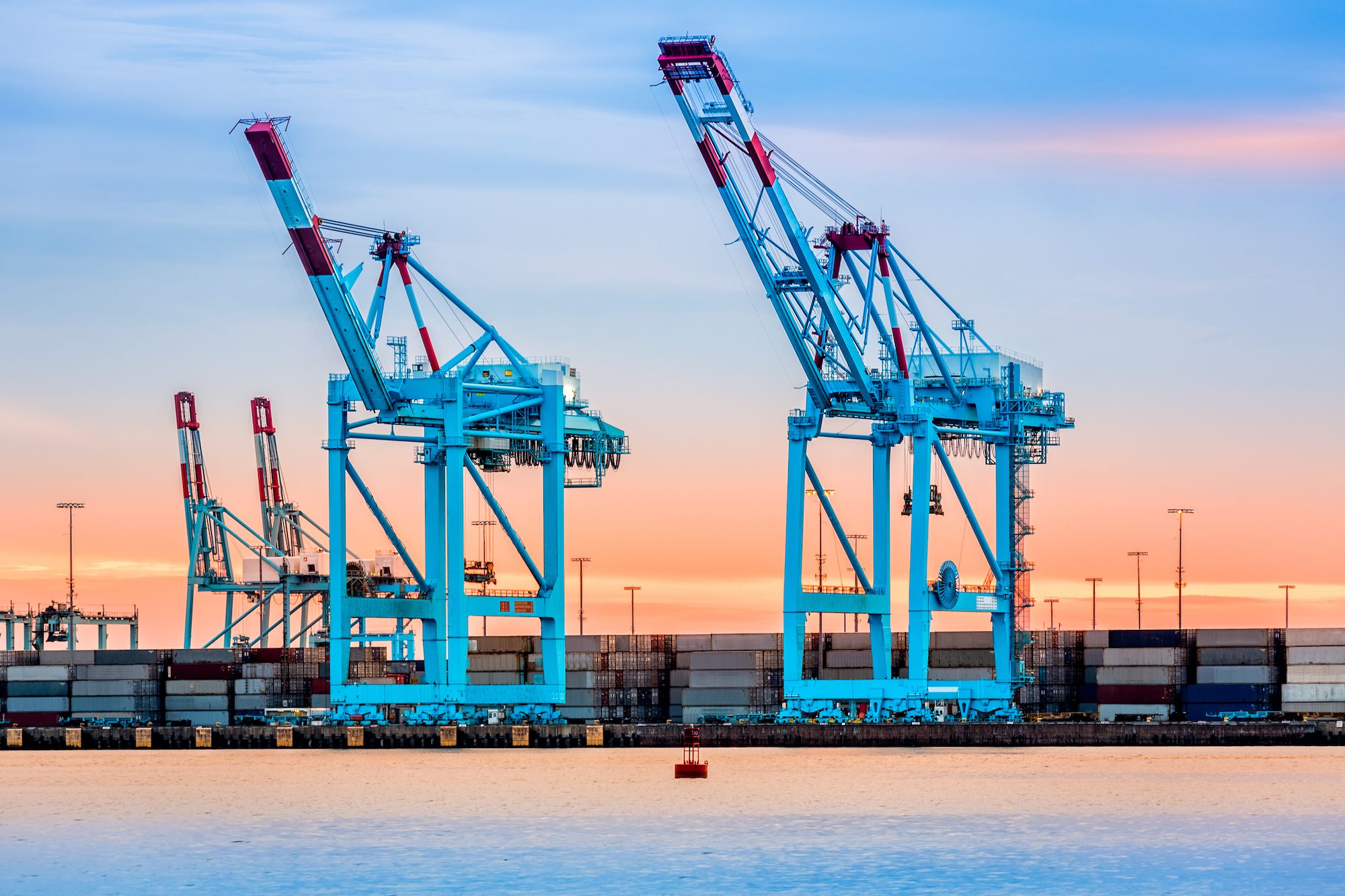The US ports sector is bracing for a challenging year ahead as tariffs, policy unpredictability, and weakening consumer demand threaten to reverse recent growth trends, according to a new outlook from Moody’s Ratings.
“The 2026 outlook for the US ports sector remains negative given the adverse effect of tariffs and policy uncertainty, and as US real GDP growth slows and consumer spending moderates,” said David Kamran, Assistant Vice President – Analyst at Moody’s Ratings.
Container cargo volumes, which have shown resilience through most of 2025, are projected to range from flat to down 2% in 2026 compared to this year. The forecast marks a reversal from the healthy growth experienced through most of 2025, when volumes ranged from flat to up 1%.
Trade policy volatility remains the primary headwind facing port operators. An average effective tariff rate of nearly 17% continues to weigh on trade flows, with the burden increasingly being passed through to consumers, potentially weakening purchasing power and dampening imports. While some US companies have absorbed tariff costs, additional pass-through could further erode consumer spending, which is expected to slow in 2026 amid policy uncertainty and financial strain.
The timing and magnitude of tariff effects remain difficult to predict due to frequent policy changes. While additional tariffs may be announced, factors including a preliminary trade deal with China and a Supreme Court review of certain tariffs could reduce tariff levels.Vehicle tariffs, in particular, pose a risk to ports with significant automotive cargo operations.
Beyond trade policy, slower US GDP growth and moderating retail demand will further dampen port activity.The combination of tariff pressures and economic softening creates an unpredictable environment for operators and shippers alike.
Despite these challenges, US ports generally benefit from strong financial positions and ample liquidity to weather the downturn.
Some major concerns that plagued the sector earlier have eased. US fees on Chinese ships and shipping have been suspended, while labor disputes at East Coast and Gulf Coast ports are largely settled.Panama Canal geopolitical tensions have subsided and water levels are adequate, though Red Sea shipping attacks remain a risk.
Cybersecurity threats continue to loom over the sector. While no major disruptions have affected US ports this year, global risks remain “high” — an increase from “moderate” several years ago, driven by multiweek disruptions at ports in the US, Japan, and Australia.
The one bright spot in an otherwise gloomy forecast is the cruise business. Major cruise companies’ 2026 pricing is up about 5% compared to a strong 2025, providing revenue resilience for select ports.While cruises account for less than 10% of sector revenue, the amount is material for multiple Florida ports and the Port of New Orleans.
The negative outlook could shift to stable if tariff policy becomes more predictable or if cargo volumes return to low growth in the next 12 months. A positive outlook would require volume growth above 3% over the same period.
For now, US ports face a period of adjustment as they navigate an uncertain policy environment and weakening demand dynamics that threaten to stall the momentum built over the past year.

 Join The Club
Join The Club











